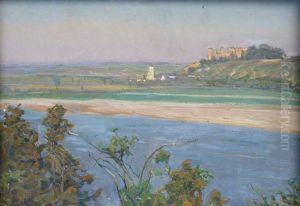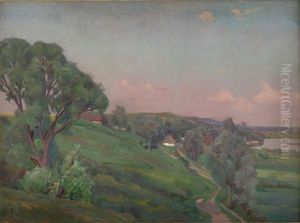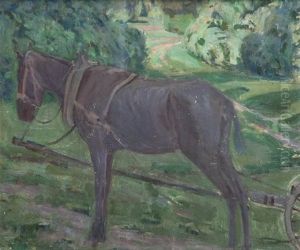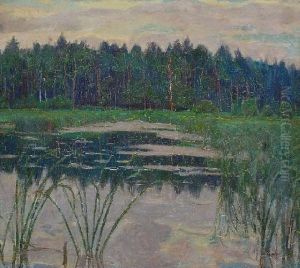Bronislaw Kowalewski Paintings
Bronislaw Kowalewski was a Polish artist, born in 1884, whose work remains largely obscure outside of his native Poland, but within his homeland, he is celebrated for his contributions to early 20th-century Polish art. Kowalewski's life and career were profoundly influenced by the turbulent times in which he lived. His artistic journey began in an era when Poland was undergoing significant political and social changes, navigating between the pressures of neighboring powers and the burgeoning desire for independence.
Kowalewski's early work was marked by a fascination with the Polish landscape and the everyday lives of its people. He was deeply rooted in the Realist tradition, capturing rural and urban scenes with a keen eye for detail and a profound sense of empathy for his subjects. However, as Europe edged closer to World War I, his work began to reflect the anxieties and upheavals of the era. The war and the subsequent rebirth of Poland as an independent nation in 1918 profoundly impacted Kowalewski, infusing his art with themes of national identity, resilience, and the cost of freedom.
Throughout the interwar period, Kowalewski's style evolved, showing influences of the modernist movements that were sweeping across Europe. He experimented with form and color, gradually moving away from strict realism towards more expressive techniques. Despite this stylistic evolution, his work continued to be deeply imbued with Polish themes, focusing on landscapes, historical events, and portraits of individuals who embodied the spirit of the nation.
The outbreak of World War II brought tragic changes to Kowalewski's life and career. Poland's occupation by Nazi Germany and the Soviet Union imposed severe restrictions on artistic expression and led to widespread persecution of intellectuals and artists. Kowalewski's work during this period is characterized by a sense of urgency and despair, often using allegory and symbolism to comment on the brutality of war and the occupation. His ability to convey the resilience of the human spirit despite oppression is considered one of the most poignant aspects of his later work.
Bronislaw Kowalewski's life came to a tragic end in 1944, amidst the chaos of the Warsaw Uprising, a symbol of Polish resistance against Nazi occupation. His death marked the loss of a profound voice in Polish art, but his legacy lives on through his contributions to the visual narrative of Poland's history. Kowalewski's body of work serves as a testament to the power of art to reflect the complexities of human experience, embody national identity, and bear witness to the indomitable spirit of resistance against tyranny.



